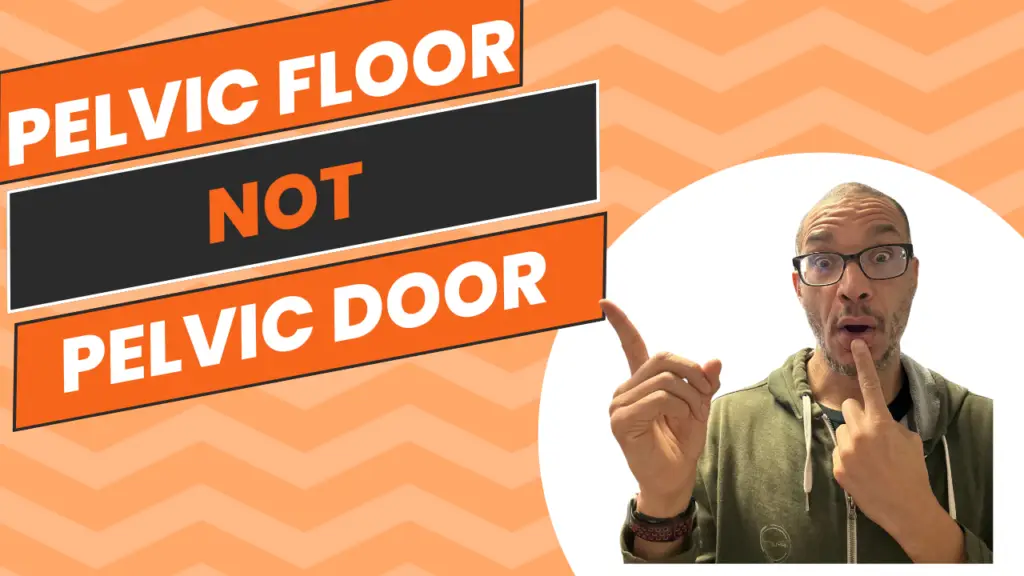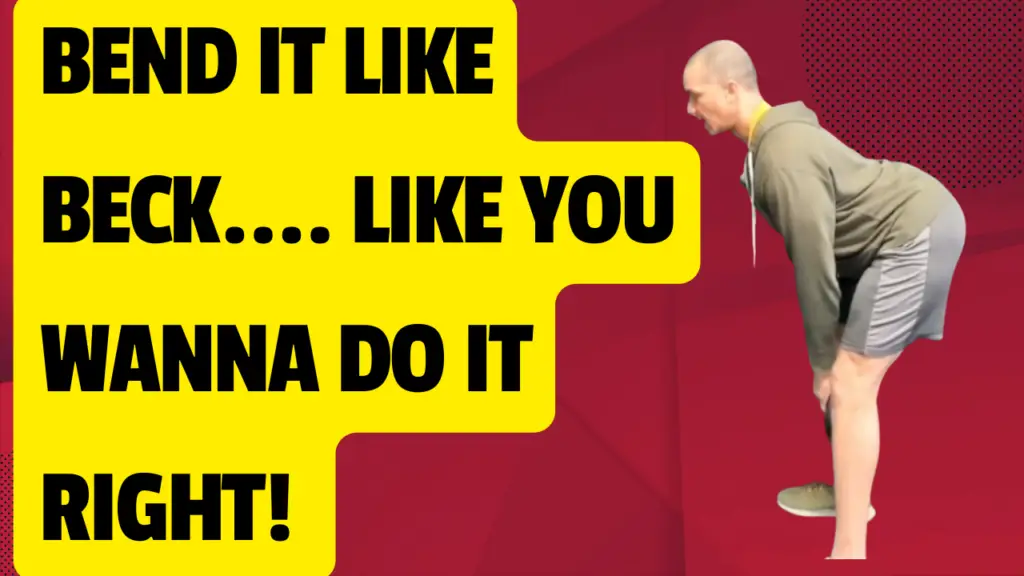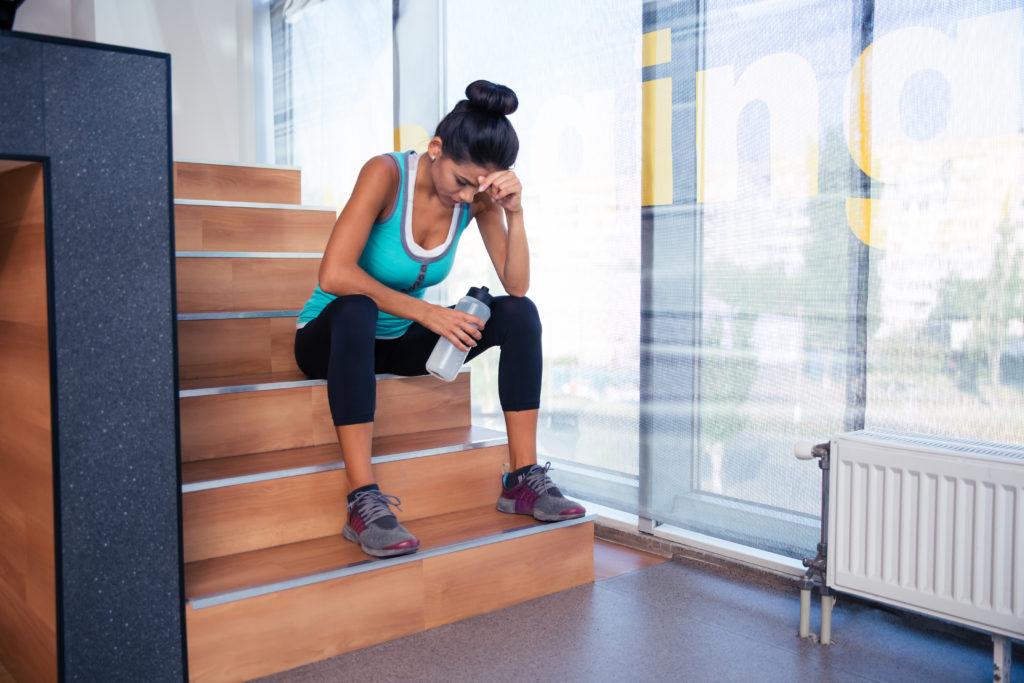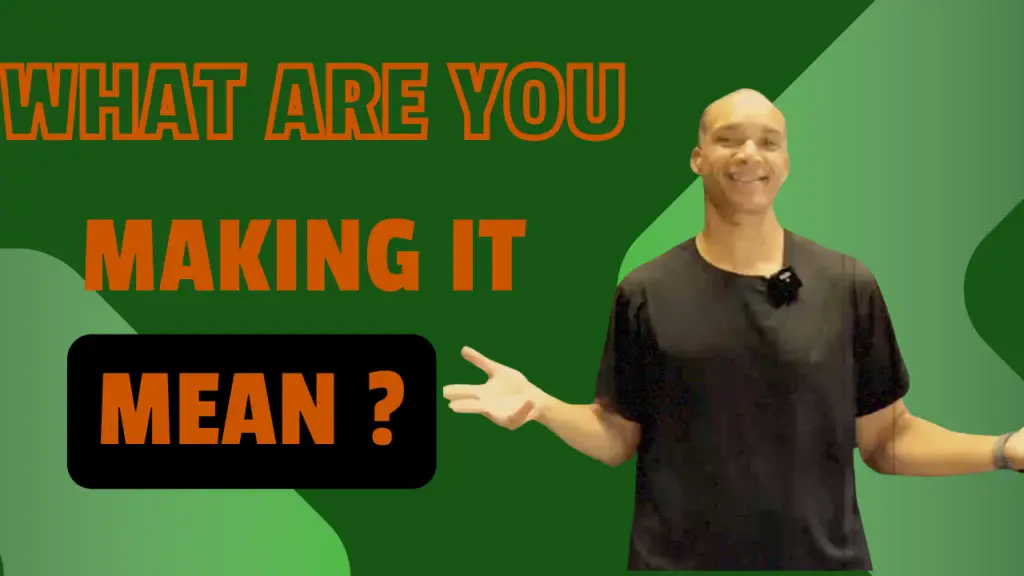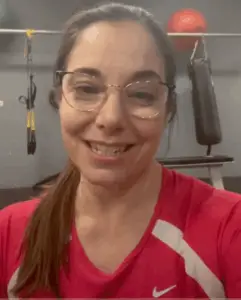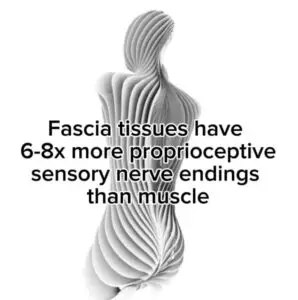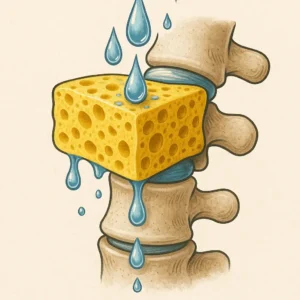Gardening is an activity that brings people tons of joy. But it’s also an activity that is very damaging to the body. People end up with back pain, neck pain, and muscle pain, and it’s all totally avoidable. Knowing how gardening affects your body and how to take care of it, you can continue growing as you age. Learn how to take care of your body like you take care of your garden.
Click on the image to watch the video
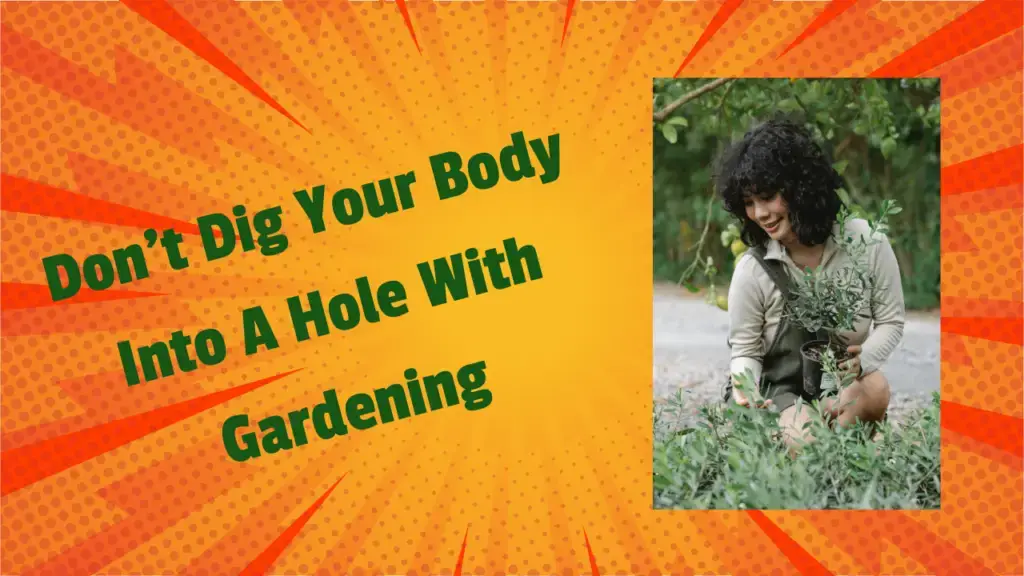
Spring has sprung, and because spring has sprung, all the gardeners are out gardening, but this gardening is producing a lot of load on people’s bodies and damaging a lot of people’s bodies to the point where a lot of them aren’t having as much fun gardening because they’re in pain all the time. Gardening needs to be looked at like any other sport. It’s very strenuous, so you have to understand what gardening is doing to your body and how to prepare it so you can garden effectively and not have so much pain afterwards, and that’s what we’re going to talk about today. I’m Ekemba Sooh, I own SolCore Fitness. I’ve been in the health and fitness field for 30 years. I’m a soma-therapist and soma-trainer, and I work under the osteopathic model. Osteopathy says structure dictates function. It simply means how structured my body is, means how functional I am.
Function means how will I breathe, think, digest, eliminate, pump blood, fight infections. It also means how well my body can move and function in life and the activities that I love so that I could have a fulfilling life. Gardening isn’t really looked at as something strenuous. It totally is, and people don’t think about how should I prepare my body before and after so I can garden for the rest of my life because that’s what gives them joy. You have to look at the body holistically. Like all activities, how has this affected my body and how can I work with my body the way it’s designed so I can continue to garden, or whatever you love, for the rest of my life? That’s how I like to talk about things in this channel, holistically. I don’t talk in one, two, or three exercises to fix X, Y, Z. It’s all about how can I best balance my body to do my life, whatever your life is.
If you want to hear more about this holistic way of addressing things, then subscribe to the channel and click that bell to be notified where each week I put out a video. Don’t forget to like this video and share it with your friends. That way, the YouTube algorithm will say, “Hey, this is a good channel. This is a good video. Let’s find more people to show it to,” so I can help more people. Before we begin, I just want to make a quick note here that I am not a gardener at all. I don’t understand why people were to take their free time and perform manual labor willingly. I love nature, but I’d much rather run, walk, or just ski or lay there in the grass.
I know people love it and I had some members ask me to do a video and it’s something I’ve been wanting to talk about anyway because of the story I’m about to tell you. Four years ago, I had a teacher come to me and she was an art teacher and she had a hard time just living her life. It took all her effort during the day to stand there or to sit, but she could barely sit, to teach her students. It took so much of her energy and she had to be so cautious of what she did, and that by the end of her day, she was shot mentally, emotionally, physically, and she had enough. She came to me, we had a consult. I told her, “Yes, it’s going to help you,” and she got into the classes. Because I guess she could move, so she didn’t need treatment.
After about, I don’t know, four to six months of being in classes, she was looking and moving great. She had no pain. She could perform her daily activities at school. She went for bike rides. She was having a great time. Then one day, she walked in and she was like, literally 10 times worse than when she first came in here. I was like, “What did you do? What happened?” She goes, “Oh, the weekend was nice and I went and garden for like, I’m guessing a little bit, but like five hours.” I’m like, “Oh, God.” I said, “Did you warm up before or stretch afterwards?” “No.” Ding, ding, ding. What she had done is she did too much for her body. To give an example, she had prepped her body and got it strong enough to where she could perform her life. If she prepped her body to lift up 100 pounds, good, she can lift that.
That’s her daily life, is lifting 100 pounds, but then she wouldn’t garden for five hours. Well, the example is now she wants to lift 500 pounds, but she never prepped her body to do to lift 500 pounds. These are stupid numbers. Don’t get caught up in this. She never got her body ready to garden for five hours. She never warmed her body up before the strenuous activity and she never did any corrective/normalization exercise after her gardening. With all those three factors happening, the body is like, “All right, dude, that’s it.? Tightened up and a bunch of pain. Life, your sports and your activities, all have a damaging effect to your body, AKA, wear and tear. How much you become damaged depends on three factors. Your genetics, how balanced you are and the amount of load you put on of your body during life and your activities.
Genetics, it’s pretty simple. You can enhance your genetic profile or enhance… Sorry. You can enhance your positive genetic profile or enhance your negative genetic profile by how well you take care of yourself, what you eat, the water, your mental, emotional, and your physicality, stretches, exercises and treatments. How balanced you are is the structure I was talking about before. Structure dictates function. That’s what I mean by balanced, not circus tricks. How well you’re balanced is again, part of your genetics, but very much is affected by what treatments, exercises, and structures are you doing on the daily to keep your body as balanced as possible or not doing to let it go wherever your body is going to go. Then a load on your body is two parts. You have the load if something’s just really heavy. If you’re gardening, you’re picking up trees and gigantic rocks, that’s load, it’s hard to do.
The load is also time under tension, meaning how long are you in a posture? If I’m in this position for a long time, even without weight, well, that’s a lot of load through my structure because I’m holding in position. For gardening, in terms of load, you got both. You’re picking up trees and rocks and you’re in a long-time position for three to five hours. That’s a long time to have your body, very strenuous. For the purpose of this video, to keep it short, because your entire body is being stressed, let’s focus on three areas, your knees, your back, and your spine. As we go through these different areas, I want to give you a little bit of science relative to the area we’re working and how that’s working because it’s not because Ekemba says it, it’s because, oh, look, this really smart scientist discovered this great rule and here’s how it applies to your body.
With the knees, there’s a lot of squatting, a lot of dynamic squatting, up and down. A lot of static squatting, squatting down, holding position. What you want to know about a squat is as you start to squat down, so this is your thigh-bone, so your thigh-bone starts to move down. It goes from vertical on down. Your knee cap is here. As the thigh goes down, at about right before 90 degrees, your knee cap and your thigh are perfectly lined up. It’s like a puzzle piece. They’re good. That continues to about 90 degrees right there, and then once you get past 90 degrees, now you don’t have full contact and now you have a little bit of rubbing, potential rubbing right there because it’s not even right there. We have a law called Delpech’s Law, which means hyperproduction from hyper pressure.
If I’ve got pressure, I get hyperproduction of the tissue that’s being rubbed. In this case, cartilage. It could be bone or tissue. That production of that tissue is anarchic. It’s random. Well, not random, but it’s not smooth and nice. That once smooth surface of your trochlea and the back of your kneecap, the posterior kneecap, which was once smooth, is not smooth anymore. Now it becomes bumpy. Now, even with a good squatting from to 90, now it’s rubbing because it’s bumpy. Now you have a bumpy surface which exasperates that Delpech’s Law. On to your back, so your back has two factors you want to think about in terms of the load on your body so you can pay attention to it. The first is the lever arm. Archimedes said, “Give me a long enough lever arm and I can pick up the world.”
Unfortunately, for your back, that means there’s more force. Lever arm, as I hold here, I don’t know if you can see the whole thing here, but the end right here is a lot of force to hold that. As I lean over a lot, so imagine this is your lower back right here. Big boom. As I lean forward, maybe I’m guarding or picking stuff, whatever, that lever arm, mainly in your back, there’s some tension here, but mainly in your back, increases. As it increases, then you’re using either static force holding yourself in place or that dynamic force, your back is going to take a lot of that load. It’s not bad if you knew how to do to prepare, but you understand that there’s a lot of load. The second part for your lower back is that you need to understand that from your belly button to your pelvis right here, there’s no real bony structures.
You do have a spine, I realize that, so from L3 down to L5, but your spine is not a column, like the Roman column. It’s not a column, it should be four-degree curves. Each segment is not load bearing. In totality, it helps, but it doesn’t hold like a column. If I don’t have any bony structures to hold me in place, from here to here, it’s all soft tissue. That soft tissue is done through, not just a musculature, it’s part of it, but mainly through the fascia layers. You can say you have different layers, like rings of fascia. Let’s say you have hundreds of them to hold yourself in place. That way when the forces come into your body, those layers of fascia and soft tissue can attenuate, move the forces away. Are you a gardener whose body hurts really bad after gardening? Are you starting to realize a little bit about how strenuous gardening is to your body? Let me know in the comments.
Last but not least is your spine. Your spine, outside of pathology, has a bunch of different ways it can move. It can move in flexion, it can move in extension, it can move in rotation and translation and then all combination of all four. In reality, in osteopathy, what they talk about is everything happens mainly rotation. You can’t do any of those moves without any type of rotation in your joints. Not bad if you have good joints, but rotation, when I rotate a joint, if I turn right there like that, then my upper vertebra and my lower vertebra come together because of ankylosis fibrosus, so when I turn, they come together. If I have enough space and my disc is fluffy, who cares? If I don’t, then as it rotates down, and I get fun things like disc bulge, herniation prolapse, arthritis, pinched nerves. All those wonderful things that everybody loves.
The two main movements you have to be concerned about with gardening is flexion and rotation and extension and rotation. With flexion and rotation, like I’m scooping the dirt, and I’m doing that, you have that lever arm I talked about. First, I’m statically, for the most part, kind of dynamically, out here, and I have a lever arm of my body and the shovel and how much dirt I pick up, multiply that. Then I take that and I, whatever I do, I do that. Then when I do that, I get some rotation in my trunk, and if my body, my core, my total core, not just my abs, can’t stabilize my spine and move my spine properly, that’s bad. That’s where you get all those things that we don’t like.
The second is extension and rotation. You have the same basic idea. If I extend and turn, I’m getting that compression, but extension is a little bit different because in the back of your spine you have thing’s called facet joints. Your facet joints are like the little steering wheels of your FSU, your functional spinal unit. A functional spine unit means the joint between my upper vertebra and my lower vertebra, that joint between, the totality, the whole thing, front and back, insides. You’ve got a bunch of them up and down your spine. Those little facet joints, they’re total joints, like your elbow or your shoulder or your spine.
When I rotate backwards and those joints compress, because they do, and they start to, oh, my God, I can’t think of the word, they start to rub each other, then you get that Delpech’s Law again. Because now I’m leaning back, the facet joints are the being compacted and then I’m rotating for further compaction and I get that anarchic bone cartilage production. I hope you see now how much gardening does to the body, but you love gardening, you want to keep doing it. If you want to keep gardening, you want to do three things, you want to have an exercise program that in totality makes your body strong and mobile enough for the level of gardening you want to do. It’s like if I want to learn to deadlift 500 pounds, I need to train my body to learn to deadlift 500 pounds.
Same thing for gardening. I want to program that holistically allows my body to do that. The second thing you want to do is you want to warm up before the activity. Like all sports and activities, you want to prepare your body before you do activity. Our bodies, no offense to anybody, are like those old cars. We need to turn it on and rev it up a little bit to get it going before we take it for a drive. Then after gardening, you want to take the areas of your body you use most and stretch them, correct them, normalize them, whatever word you want to do. I want to do something for you. I don’t show a lot of exercise in this program because there’s too many, I don’t know what you need, I don’t know how you’re going to take it, but I can show you a warm-up.
A quick note, a warm-up is something you can do, obviously, before gardening, but you can do anytime. A warm-up has no contraindications outside of injury and stuff like that. A warm-up is great for turn your body on. As I warm up, I wake up the computers in my body and now the computers in my body communicating my brain, I get a better body-mind connection, which means I move more effectively. A warm-up warms up the liquid in your body. Like I talked about with the car, the oil and blood and, not the oil, the blood and lymph and all the fascial liquid inside your body is more viscous at the beginning, it’s thick. When I do a warm-up, I now make that more liquid. Now my tissues can slide and move much easier. With the warm-up, we’re going to stick with those three areas.
I’m going to back up here. Warm-up where you want to work with the knees, pelvis, and spine. With your first one to warm up, like a walk around the block just to get yourself warm. Not long, two to five minutes, at a decent pace. Then you want to take your knees in a circle, that’s a circle. That’s what I want to do with my knees. The reason I start with circles in the knees is because the micro movement manages the macro movement. The little tiny movements of circles with my knees and other things I’m going to show you, helps manage how much I flex and extend, so when we’re squatting down and picking up trees, let’s reverse directions, these little circles, movements I’m going to show you, help manage how well you can flex. Now I’m keeping it small here. If you can go deeper, go deeper.
Then now I’m done with circles, now I want to do a figure eight. Figure eight is vertical, vertical means up and down. Like my finger, watch me, I want to draw with my knees a figure eight. Don’t worry if it’s confusing, I know you can get it. You keep trying and thinking, eventually you learn the skill of it. Now you want to reverse directions because I want to go both ways, like I do the circles. 10 reps is the general rule of thumb for warming up, but as much as you need. Now I want to take that eight and turn on its side. Now I want an infinity symbol right. Now I work my knees in an infinity symbol one way and then the other way. Now by doing the circles and the two figure eights, I’ve essentially warmed up all the tendons and ligaments in my knees.
Now I want you to take this funny position with the legs, wide toes and knees bent, and I want your ear, shoulder, hip lined up and I want one hand in front of your pelvis and one hand behind like that and I want you to do pelvic rocks. You’re going to breathe out, tuck your pelvis, breathe in, untuck. Breathe out, tuck as much as you can. When you breathe in, you go as much as you can, but not too far if it hurts your back. I want you to feel that motion as you keep your legs in position and torso tall. Then I want you to tuck the pelvis. I want you to hold it. You can tell it’s tucked if you reach your hand back and your lower back is flat. Now I want your arms up and I want an external rotation, which means the crease in my elbow wants to look at the ceiling with my hands open, they want to touch the walls. I want to move just my torso left and right.
Now I’m mitigating how much my spine compresses by doing translation because translation doesn’t rotate a lot. Now I don’t compress my spine, but I bring a lot of blood and liquid and I warm the spine up and the ribs up so I can move better. Then when it finished by doing like a seesaw. Now I tilt left and right. I tilt. I’m tilting from here. My arms and head follow, my legs do nothing. That little warm-up, I encourage you to practice it, it’s great before gardening. Like I said, do it whenever. You want to wake up and do it, go for it. I don’t care. Go slow at the beginning. Watch that part again and then think and try to do the exact movements because if thinking and trying to do the exact movements will allow, again, that body mind connection to happen, so when you go garden, you’re smarter. Your body is smarter, it can move more effectively. Now what I can’t show you here is the total program for your body. What I can do is help you out with that. I’ve got three options for that.
I’ve got a private Facebook group where you can join and be more interactive with challenges and master classes and interactions with me. In the description below, you’ll find the link. I’ve got a free download of a four steps to a mobile pain-Free life, so you can live the life you’re choosing, again, in the description below. I’ve got a consult with me through Calendly, so the link is below. You click on the link, you choose a time and we’ll talk. We’ll talk about where you are now, where you want to go and where I think you should go. Then only if I see you’re a good fit, will I offer my services to you. I hope this is helpful. Go have fun doing manual labor all you want, but make sure that you start to teach factors into consideration so you can keep gardening as long as you want.
it’s not just working out, it’s building a foundation for a better life.
Find out more @


